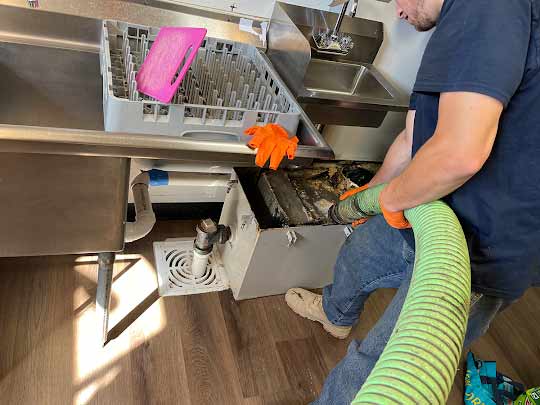
If you own a restaurant, commercial kitchen, or any establishment where food is prepared in large quantities, one of the things you must have in that facility is a grease trap. Grease traps help reduce the amount of grease leaving your kitchen and into the public sewer system.
Fats, grease, and oils (FOGS) can be problematic if allowed into your home’s sewer lines or the city sewers, says Gifford Management. Grease congeals inside the sewer lines and does not flow the same way water does. Flushing grease into sewer lines increases the risk of blockages.
This is why grease traps are a requirement for public kitchens and restaurants. There are grease traps for residential use, which do the same thing as industrial grease traps. Grease traps protect your sewer lines from grease buildup and help you avoid the cost of fixing that problem.
But for your grease trap to work effectively, you need to maintain it. Since the work of a grease trap is to remove grease from wastewater, grease traps can also get clogged with grease. This is why your grease trap needs periodic cleaning and maintenance.
How to clean and maintain your grease trap
How often you clean your grease trap depends on the size of the grease trap and your state’s regulations. In some states, you are required to clean the grease trap if 25% of the trap is filled with sludge. Other states have slightly different requirements.
These are the tools and items you will need for this job:
- Screwdriver, pliers, or something to help you open the grease trap’s lid.
- Work clothes or old clothes that you don’t mind losing (this will be dirty work).
- Rubber gloves, goggles, and face mask to protect you from foul liquids and odors.
- A putty knife or anything to scoop with.
- A shop vacuum or something similar (optional).
- A five-gallon bucket.
- Trash bag or bin with kitty litter or some absorbent material inside.
Step one: Get the lid off
It is a good idea to wait until the restaurant is closed before you clean the grease trap. This is because of the foul odors from the trap once the lid is off. To begin cleaning the grease trap, remove the lid. You may need a screwdriver, pliers, or an Allen key.
Step two: Scrape the baffle
If your grease trap has a removable baffle, lift it and scrape it with the putty knife. Keep the baffle over the grease trap to ensure the scraped-off crud falls back into the open trap. Do not replace the grease trap’s baffle so you will have enough room to work. If the baffle is not removable, scrape it as best as you can.
Step three: Scoop out the scum
There should be a lot of scum floating on the surface of the water inside the grease trap. Try to get most of this out with the scoop. Do your best to avoid scooping water with the scum; you don’t want to be dumping water into the trash bag. Dump all that scum into the trash bag or bin. The kitty litter in the bin will absorb the moisture from the scum and harden it.
Step four: Remove the water
Using a Shop vacuum, remove all the water inside the grease trap. If you do not have a vacuum, you may use the scoop. Put all the water inside the 5-gallon bucket. To avoid the additional work of scrubbing your floors to get rid of the foul-smelling water, try not to spill any of it.
Step five: Remove all the sludge
With all the water removed from the grease trap, you should be able to reach the sludge on the sides and at the bottom of the grease trap. With the putty knife, scrape the sides of the grease trap and use the scooper to remove all the sludge at the bottom. Put everything into the trash.
Step six: Run water into the grease trap
Do not put hot water or chemicals into your grease trap. These will damage the grease trap or interfere with its proper function. Instead, you want to open the faucet and let water flow from the sink into the trap. You may also want to fill a five-gallon bucket with water and pour it into the grease trap to dislodge any dirt and wash it out. Vacuum out the water with all the debris.
Step seven: Inspect the grease trap
Before you put the parts of the grease trap together again, take time to inspect it. Make sure the grease trap’s features are as they should be. This is important if you have owned your grease trap for more than ten years. Although they are made of sturdy steel, remember that grease traps do get damaged.
